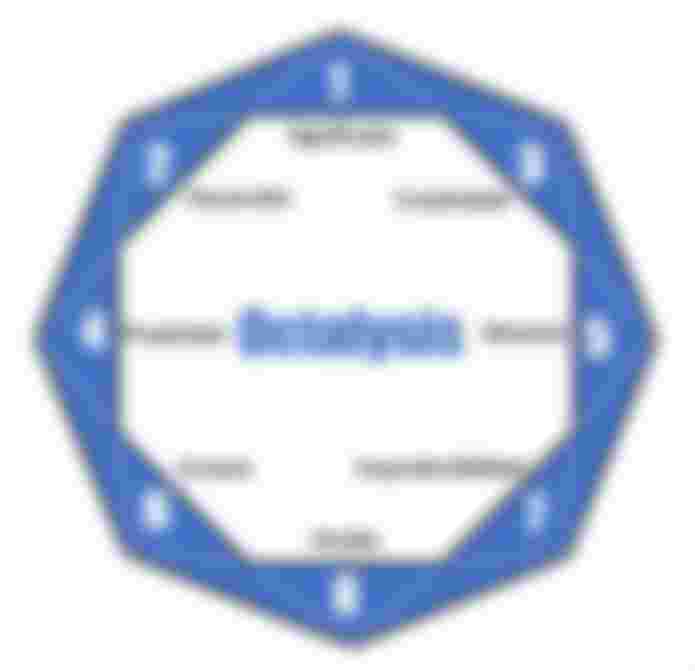Octalysis is a framework for the design and analysis of “human-based” gamification systems. Created by gamification expert Yu-Kai Chou.
If this is the first post you've read on this topic and you don't know what Gamification or the Octalysis Framework is, you can read these two previous posts first:
Octalysis, organization of core drives
Why is gamification necessary
Most tasks and responsibilities are traditionally designed for people to perform their functions as quickly and efficiently as possible. We are talking about the jobs, studies and various responsibilities that all people have. The most important thing is the task that is being performed because the person who performs it is up to a certain level obliged to perform it. In this way, systems are designed "based on functions" and do not take into account the sensations, feelings, insecurities and reasons why people perform that function. But this comes with great difficulty.
That a system has defined that a person must perform a function; even if they are paid, that does not mean that the person is motivated to perform that role. Which can cause the function to not be performed, to be done incorrectly or inefficiently and also to make the person feel bad about performing it.
This is the main reason why a very high percentage of the world's working people feel bad about their work. Or that they consider that your job is simply to earn a living and that it doesn't have to make you feel good. This is a serious error.

Normally working-age humans spend 8-10 hours a day working. This time they can add another 4 hours between transportation and other activities associated with the fulfillment of their responsibilities. If we deduct at least 6 hours that we spend sleeping, there are only 4 hours left to carry out some activities that we could consider rewarding, fun or positive. Does that mean that only 16 to 20 percent of our lives are dedicated to activities that give us pleasure? Isn't that very little?
It is really very little. And of course, the solution is not that we stop working or fulfill our responsibilities. The solution is that the activities associated with our responsibilities are designed in such a way that they are rewarding, fun and positive for the person who performs them.
Games (video games, sports, recreational activities, hobbies, etc.) instead have great power to keep people focused and often working very hard. Many times we try harder in positive games and activities even though these supposedly do not bring us any material benefit.

The reason is that these activities are designed with people in mind to feel good and have a good experience. This is achieved by finding the drivers that create the necessary motivation in people.
Human-based design
The Octalysis framework is based on the premise that systems must be designed “human-based” and pay special attention to the sensations, feelings, insecurities and reasons why people perform a certain function.
The central idea is to design the functions in such a way that people want, feel good and are motivated to perform those functions. In this way, the person has a special interest in fulfilling the function, and also doing the best that he can. In short, the function (which is the particular interest) will be fulfilled efficiently and also the person feels good doing it.
Can you imagine that all our works were designed in this way?

Octalysis lays the framework for analyzing the driving forces behind human motivation. It is the process of applying the basic behavioral urges that motivate a person to complete a task efficiently through a positive experience. The Octalysis framework is already used in healthcare, fitness, education, training, business, and product design to increase user engagement and motivation.
Octalysis framework
Almost all successful games attract certain core drives within us and motivate us towards a variety of decisions and activities. Also different types of playing techniques push us forward in different ways; some through inspiration and empowerment, others through manipulation and obsession. Octalysis separates and differentiates one type of motivation from another for a better understanding of design.
Everything we do is based on one or more of Octalysis's 8 core drives. This is important to keep in mind because it also suggests that if there are none of these core drives behind a desired action, there is no motivation and no behavior occurs.

The 8 Core drives of Octalysis
Core Drive 1: Meaning and Epic Call
The epic meaning and calling is the central impulse that works when a person feels that he is doing something greater than themselves and/or was "chosen" to take that action. This drive is also part of the feeling of belonging to a community. You belong to something greater than yourself as an individual and the tasks you perform have a higher meaning, even if they do not benefit you particularly.
An example of this is when a gamer spends much of his time contributing to projects like Wikipedia. We are familiar with the fact that people don't contribute to Wikipedia to make money, but they don't even contribute to filling out their resumes. People contribute to Wikipedia because they feel that they are protecting the knowledge of humanity, something much bigger than themselves.
Core Drive 2: Development and Achievement
Development and achievement is our core drive to progress, develop skills, achieve mastery, and ultimately overcome challenges. The word "challenge" here is very important, because a badge or trophy without a challenge has no meaning. This drive can be a great motivator if designed correctly, but if designed poorly, it can create a sense of banality in achievement.
The feeling that we are progressing, growing, overcoming obstacles and achieving is an incredible feeling.
Core Drive 3: Empowering Creativity and Feedback
The empowerment of creativity and feedback is expressed when users participate in a creative process in which they constantly discover new things and try different combinations. Not only do people need ways to express their creativity, they also need to see the results of their creativity, receive feedback, and adapt in turn.
This central impulse is like the pinnacle of a great system. If you manage to correctly design techniques to allow users to be creative, this leads to constant user satisfaction where the designer no longer needs to continually add additional content to keep the activity fresh and engaging. The brain just entertains itself.
Core Drive 4: Ownership and Possession
Ownership and possession is where users are motivated because they feel they own or control something. When a person feels he owns something, he innately wants to increase and improve what he possesses. In addition to being the main driver of the desire to accumulate wealth, it deals with many virtual goods or virtual currencies within systems. Also, if a person spends a lot of time customizing their profile or avatar, they automatically feel more in control of it. Finally, this impulse is also expressed when the user feels the owner of a process, project and / or the organization.
Core Drive 5: Relationship and social influence
Relationship and social influence incorporates all the social elements that motivate people, including: mentoring, social acceptance, social feedback, companionship and even competition and envy. When you see a friend who is amazing in some skill or possesses something extraordinary, you are driven to do the same. This is also expressed in how we naturally approach people, places or events with which we can relate. If you see a product that reminds you of your childhood, the feeling of nostalgia would probably increase the chances that you will buy the product.
Core Drive 6: Scarcity and Impatience
Scarcity and impatience is the main motivation for wanting something simply because it is extremely rare, exclusive, or immediately unattainable. Many games have dating dynamics or torture breaks inside (come back 2 hours later to get your reward) - the fact that people can't get something right now motivates them to think about it all day. As a result, they return to the product whenever they have the opportunity. This momentum was well used by Facebook when it launched: at first it was only for Harvard students, then it was opened to some other prestigious schools, and finally to all universities. When it finally opened up to the whole world, many people wanted to join simply because they couldn't before.
Core Drive 7: Unpredictability and Curiosity
Unpredictability is the central drive to be constantly involved because you don't know what will happen next. When something doesn't go into its regular pattern recognition cycles, your brain kicks in and pays attention to the unexpected. Obviously, this is the main driver of gambling addictions, but it is also present in all lottery or sweepstakes programs that companies run. On a lighter level, many people watch movies or read novels because of this core drive.
Core Drive 8: Loss and Avoidance
This core drive should come as no surprise: it is the motivation to prevent something negative from happening. On a small scale, it could be to avoid losing previous jobs or changing one's behavior. On a larger scale, it could be to avoid admitting that everything you've done up to this point was useless because you're quitting now. Also, opportunities that are fading have a strong use of this core drive, because people feel that if they don't act immediately, they will lose the opportunity to act forever (eg, "Special offer for a limited time only!" )

A process designed with good gamification must take advantage of these core drives to motivate people to perform desired functions. In this way, there are real motivations behind the work to be done and the person who does it feels satisfaction doing it in the best possible way.
Of course, it is not easy to design a correct gamification and many have failed in the attempt. Even many games fail because they fail to keep their users motivated enough even if they have similar features to other games.
Gamification design is an art.
There is still much more
The Octalysis framework is a complex and extensive discussion of how to drive people's motivations to perform certain functions. There is no way to explain it in this article alone.
That is why this is part of a series of articles that I invite you to visit to better understand this world of gamification and to realize how great it is and how much it can help the world.
Octalysis, organization of core drives
Invitation
I also invite you to read these other two series of articles that detail the workings and amazing results of two cryptocurrency investment systems. I invite you not to miss the opportunity to grow your capital without the need for expert knowledge of stock market issues.
Trust Investing, a solid investment
Subscription
If you have found this article interesting, you may want to learn more about the subject and read some more, consider subscribing to my user and you will find out when I publish something new, as well as the corresponding community.
Thank you all…





What is important is to enjoy life even if its hard. Dont give up on life. Be happy and enjoy. ❤